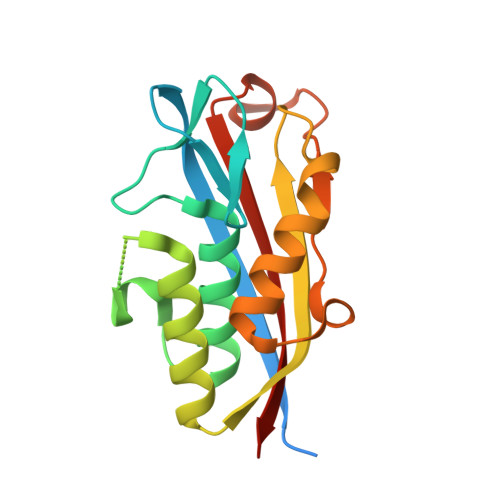Cytidine derivatives as IspF inhibitors of Burkolderia pseudomallei.
Zhang, Z., Jakkaraju, S., Blain, J., Gogol, K., Zhao, L., Hartley, R.C., Karlsson, C.A., Staker, B.L., Edwards, T.E., Stewart, L.J., Myler, P.J., Clare, M., Begley, D.W., Horn, J.R., Hagen, T.J.(2013) Bioorg Med Chem Lett 8: e53851-e53851
- PubMed: 24157367
- DOI: https://doi.org/10.1016/j.bmcl.2013.09.101
- Primary Citation of Related Structures:
3KE1, 3Q8H - PubMed Abstract:
Published biological data suggest that the methyl erythritol phosphate (MEP) pathway, a non-mevalonate isoprenoid biosynthetic pathway, is essential for certain bacteria and other infectious disease organisms. One highly conserved enzyme in the MEP pathway is 2C-methyl-d-erythritol 2,4-cyclodiphosphate synthase (IspF). Fragment-bound complexes of IspF from Burkholderia pseudomallei were used to design and synthesize a series of molecules linking the cytidine moiety to different zinc pocket fragment binders. Testing by surface plasmon resonance (SPR) found one molecule in the series to possess binding affinity equal to that of cytidine diphosphate, despite lacking any metal-coordinating phosphate groups. Close inspection of the SPR data suggest different binding stoichiometries between IspF and test compounds. Crystallographic analysis shows important variations between the binding mode of one synthesized compound and the pose of the bound fragment from which it was designed. The binding modes of these molecules add to our structural knowledge base for IspF and suggest future refinements in this compound series.
- Department of Chemistry and Biochemistry, Northern Illinois University, DeKalb, IL, USA.
Organizational Affiliation:



















